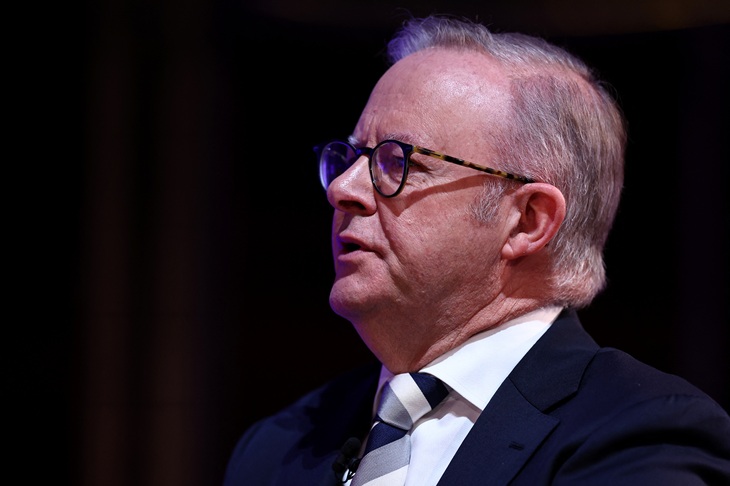
Australia's Prime Minister Anthony Albanese attends the 2025 Global Progress Action Summit in central London on September 26, 2025. The meeting in London is expected to include world leaders including Australian Prime Minister Anthony Albanese and Canadian premier Mark Carney. (Photo by HENRY NICHOLLS / AFP) (Photo by HENRY NICHOLLS/AFP via Getty Images)
The introduction of a new home deposit scheme in Australia has sparked significant backlash from prospective homebuyers. Under the initiative, which commenced on October 4, 2025, first home buyers are now able to purchase properties with a deposit of just 5 percent instead of the typical 20 percent. Critics argue that this policy, championed by Prime Minister Anthony Albanese and Housing Minister Clare O’Neil, has inadvertently driven property prices higher almost immediately.
The policy aims to assist young Australians struggling to enter the housing market. However, many have voiced concerns that it may exacerbate existing issues rather than alleviate them. Reports indicate that house prices surged by as much as $100,000 in some areas shortly after the scheme’s launch, causing frustration among those who have saved diligently for a larger deposit.
As mass migration continues to impact the Australian housing market, critics contend that the government’s approach to addressing the crisis lacks foresight. The increase in demand from newly arrived migrants, combined with the new deposit scheme, has led to a perfect storm of rising property costs. Many young Australians feel that their aspirations of homeownership are slipping further out of reach.
Senator David Pocock has been vocal in his criticism, stating, “These are predatory prices. They’re not being driven by demand; they’re driven by speculation.” He argues that the government’s actions favor wealthy investors and banks over first-time buyers, who are left grappling with rapidly escalating prices.
The government’s strategy has also come under fire for not addressing the root causes of the housing crisis. Critics suggest that rather than creating incentives for homeownership, a more effective approach would involve reducing the number of visa overstayers and implementing a temporary pause on new immigration. This would allow the housing market to stabilize and give existing residents a fair chance at homeownership.
Despite the backlash, the Albanese government defends its policy as a necessary measure to stimulate the economy. They argue that increasing accessibility to home loans will ultimately benefit young Australians. However, this perspective has been met with skepticism. Economists warn that enticing buyers to take on large debts during a financial crisis could lead to dire consequences for both individuals and the broader economy.
In a joint statement issued on April 13, 2025, Albanese and O’Neil outlined their vision for the scheme, projecting only a modest 0.5 percent increase in housing prices over the next six years. This estimate has since been criticized as overly optimistic, given the immediate market reactions observed.
The potential for a government-guaranteed housing bubble has raised alarms among financial experts. Many fear that these new homeowners, encouraged to enter the market with minimal savings, could face severe financial difficulties if interest rates rise or if property values decline.
As young Australians express their anger and disappointment, the broader implications of this policy will likely continue to unfold. The quest for affordable housing remains a pressing issue, and many are left wondering whether the government’s approach is truly in their best interest or merely a political maneuver.
In conclusion, the introduction of the 5 percent deposit scheme has ignited a significant debate about the future of housing in Australia. While it aims to assist first home buyers, the immediate fallout suggests that more comprehensive solutions are needed to address the underlying challenges facing the housing market.






